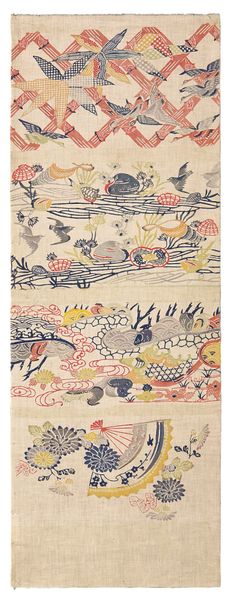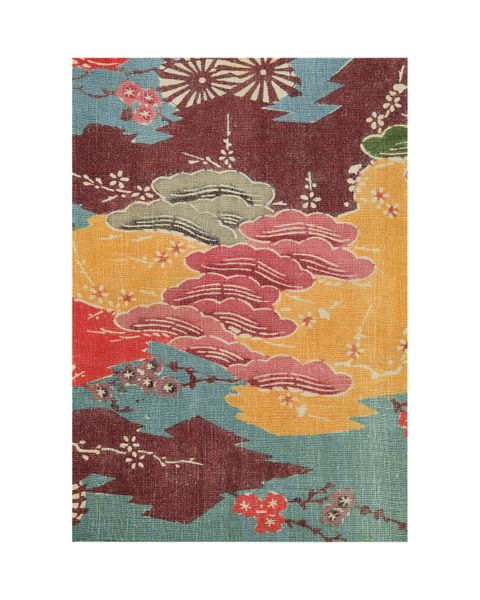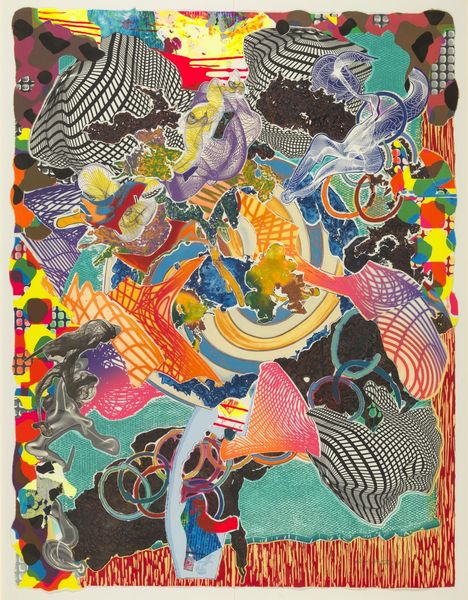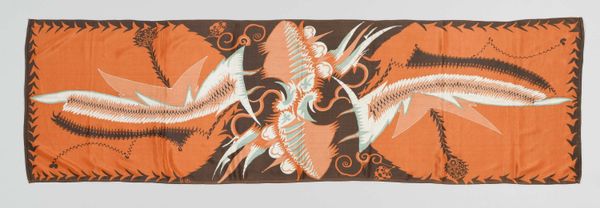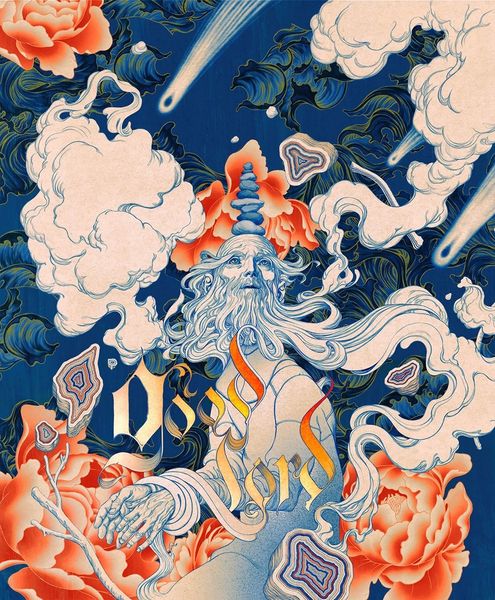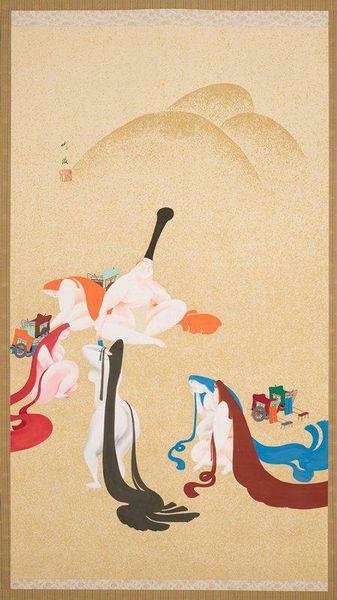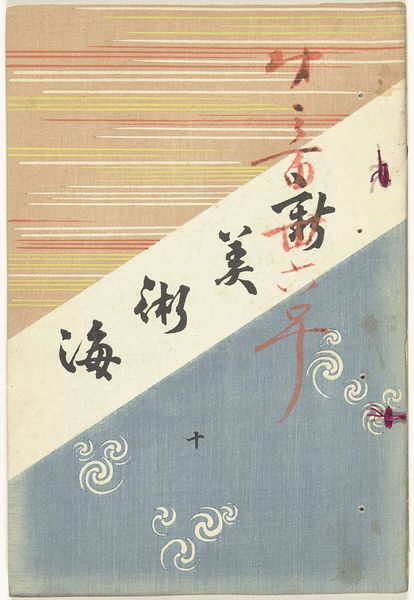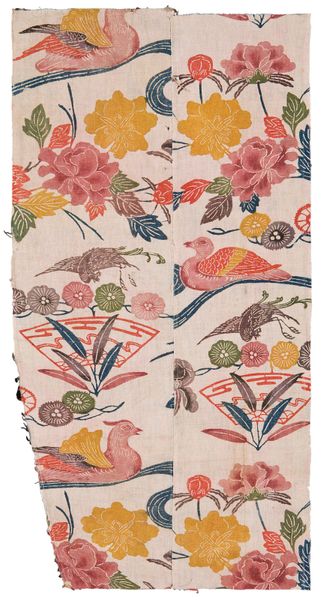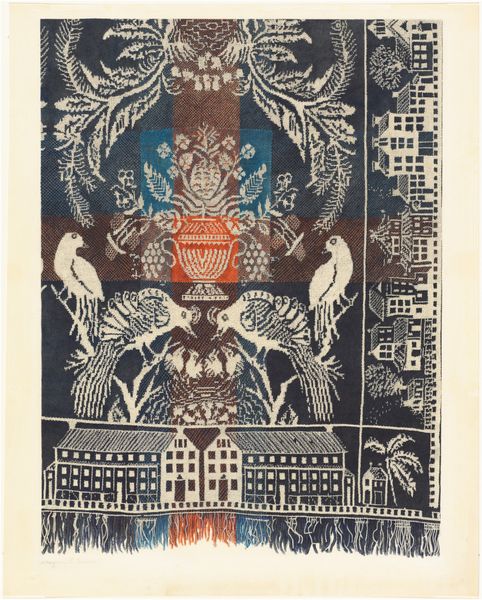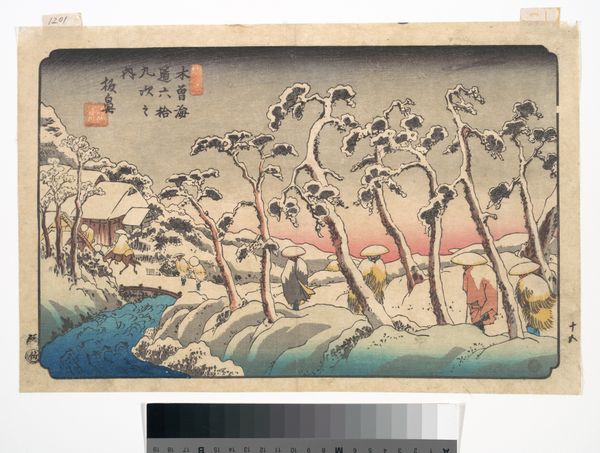
textile
#
asian-art
#
landscape
#
textile
#
ukiyo-e
#
japan
#
orientalism
Dimensions: 49 1/2 × 14 in. (125.73 × 35.56 cm) (overall)
Copyright: Public Domain
Curator: Looking at this vibrantly patterned textile fragment, one immediately notes the energy of the colors and motifs. Editor: Absolutely. I’m struck by the texture first. You can almost feel the weave; and how the dye saturates the fabric in places but leaves a ghostlier image in others. Curator: This work, entitled "Fragment with pine," comes to us from around the 19th century. Though we don't know the creator, it resides now at the Minneapolis Institute of Art and falls within the tradition of Asian art, influenced by the Ukiyo-e style. Editor: I can see that. It is a powerful, complex image built of simple shapes, likely made through a labor intensive process of block printing that really calls out the means of production and materiality of the work. Look at how repeated motifs build up this elaborate composition, suggesting rolling hills and clouds, like the whole landscape is a carefully designed tapestry. Curator: Ukiyo-e, meaning "pictures of the floating world," often depicted landscapes and scenes of everyday life. It catered to a burgeoning merchant class, reflecting a new sense of leisure and appreciation for aesthetic pleasures. How do you see the socio-cultural context manifesting here? Editor: I see the way patterns overlay on each other almost like the process of woodblock prints and the labor of their creators is represented within the work. Each pattern acts as a symbol to the different people of the era who constructed this floating world, each vital in creating the final product. Curator: The title references the pine tree, a symbol of longevity and steadfastness in Japanese culture. The strategic insertion of the pine amidst swirling landscapes really offers a potent emotional juxtaposition. Editor: Exactly. The material speaks to its functionality and social context, reminding us of the labor and social structure in art production in Japan during that era. The work’s presence in the museum, speaks of the enduring dialogue between craft and art through class structures that defined production throughout that era. Curator: A beautiful insight, acknowledging both the artistry and the rich historical narrative woven into the very fabric of this piece. Editor: I agree. A simple material that speaks volumes when looked at within the labor that it came from, providing an opportunity for reevaluation within modern times.
Comments
No comments
Be the first to comment and join the conversation on the ultimate creative platform.

